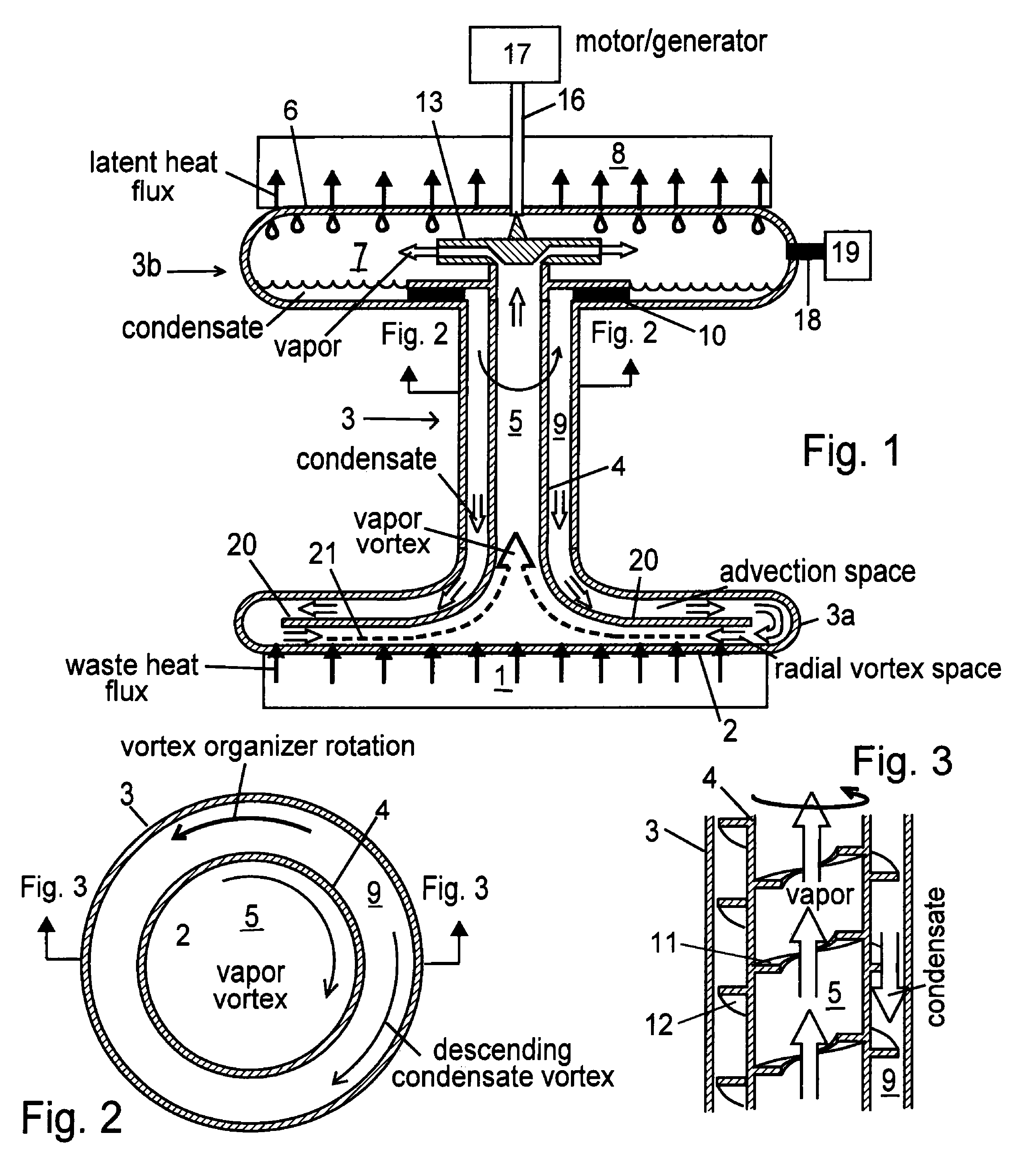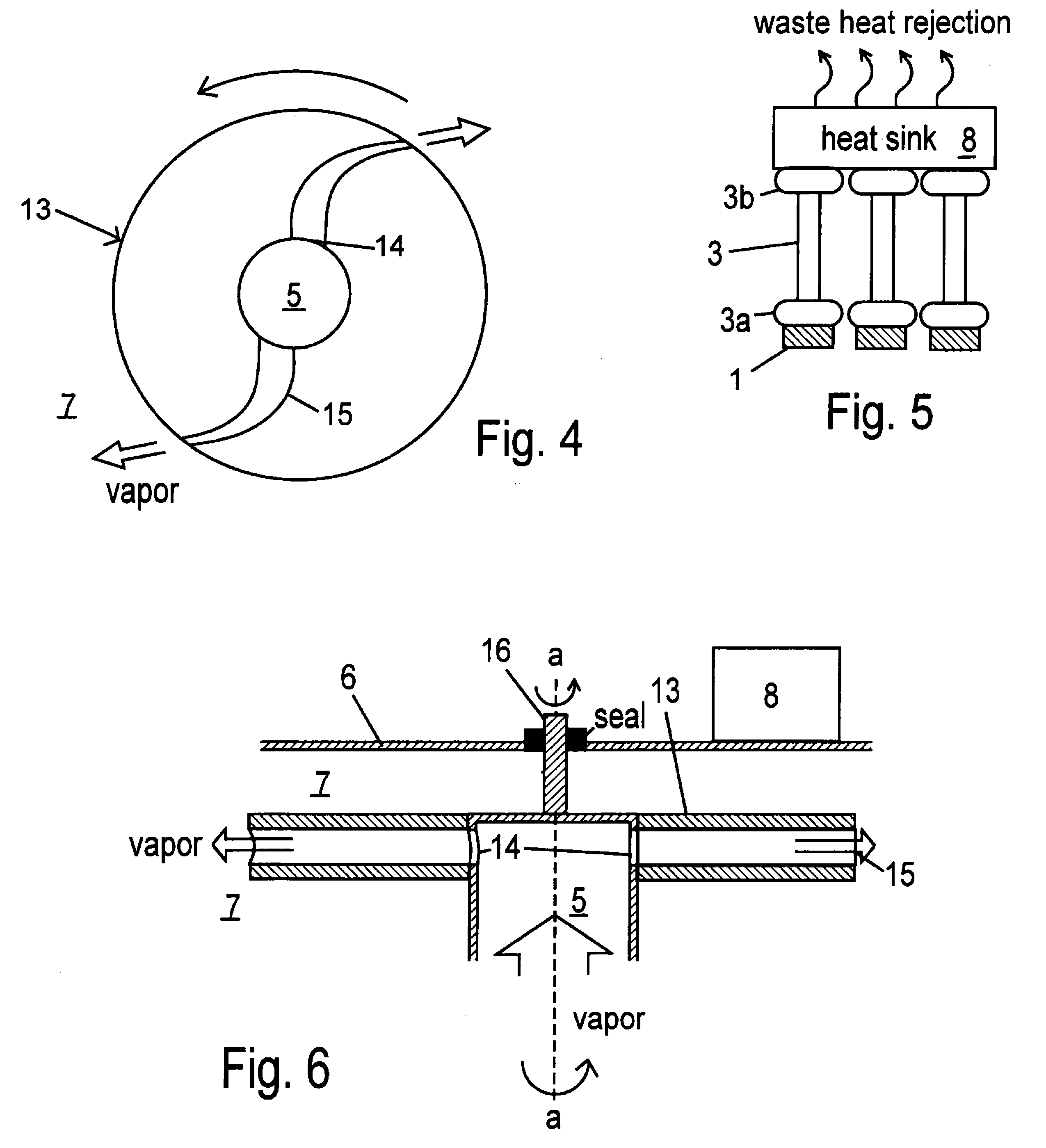Vapor vortex heat sink
a heat sink and vapor vortex technology, applied in the direction of machines/engines, mechanical and heating apparatus, and semiconductor/solid-state device details, can solve the problems of consuming inordinate energy for the task of extracting waste heat from cpus, affecting the efficiency of heat extraction, etc., to achieve power extraction and power generation.
- Summary
- Abstract
- Description
- Claims
- Application Information
AI Technical Summary
Benefits of technology
Problems solved by technology
Method used
Image
Examples
Embodiment Construction
FIG. 1 shows a cross-sectional schematic view of the preferred embodiment of the present invention. A heat source 1 such as a metal surface communicating thermally with a CPU communicates thermally with a heating surface 2 which is part of a hermetic casing 3, the casing having an evaporating end 3a and a condensing end 3b. The condensing end 3b comprises a condensing surface 6 in thermal communication with a conventional heat sink 8. The heat sink 8 could be a chiller or other high cooling power means for heat rejection to the environment known to the art of refrigeration. Or it could be a fin and tube condenser or a pool or pipe of water. Many other conventional heat sinks are known to the art and might be suitable as a heat sink 8, depending on the waste heat extraction application. The heat sink 8 is sized for the cooling power, conventionally measured in tons of refrigeration (1 ton of refrigeration=3517 watts), required by the heat load it serves. A plurality of vapor vortex h...
PUM
 Login to View More
Login to View More Abstract
Description
Claims
Application Information
 Login to View More
Login to View More - R&D
- Intellectual Property
- Life Sciences
- Materials
- Tech Scout
- Unparalleled Data Quality
- Higher Quality Content
- 60% Fewer Hallucinations
Browse by: Latest US Patents, China's latest patents, Technical Efficacy Thesaurus, Application Domain, Technology Topic, Popular Technical Reports.
© 2025 PatSnap. All rights reserved.Legal|Privacy policy|Modern Slavery Act Transparency Statement|Sitemap|About US| Contact US: help@patsnap.com



